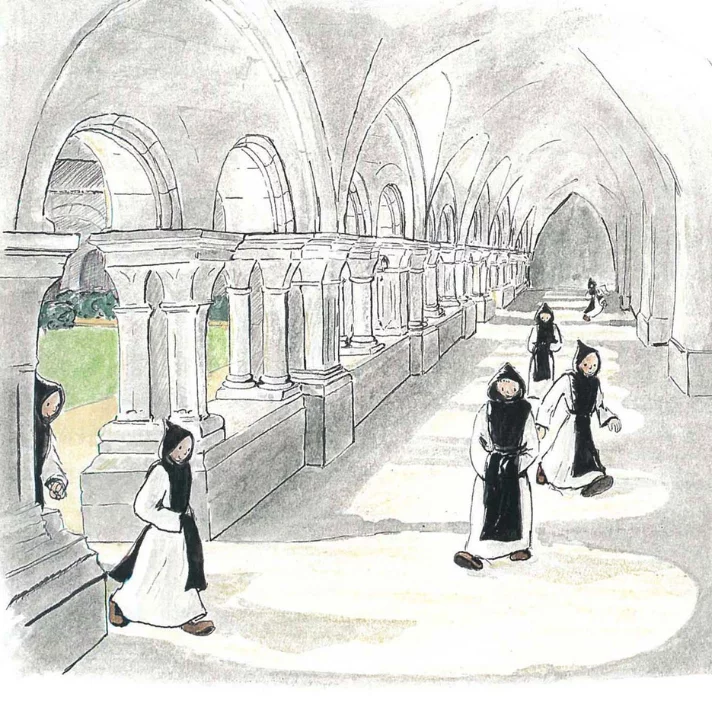History
article | Reading time5 min
History
article | Reading time5 min
At Cluny Abbey, monks followed the Rule of Saint Benedict. It takes the form of a small book divided into 73 chapters, and governs monastic life.
A monastery is a community of monks governed by an abbot. The abbot is elected for life and assisted by a council of a few officers for various functions. For the most important matters, he must seek and follow the advice of the assembly of monks gathered in the chapter house.
The term monk comes from the Greek monos, meaning "solitary". It designates a person who decides to isolate himself in order to engage in mediation.
In other words, it's a community of people who decide to live apart from the world to devote themselves to God, and vow to live under a rule that organizes their daily lives.
© La vie quotidienne selon la Règle de saint Benoît, illustrée par l'Abbaye Sainte-Marie de Rieunette / Edition Pierre Téqui / février 2005
At Cluny Abbey, monks followed the Rule of Saint Benedict. It takes the form of a small book divided into 73 chapters, and gives rhythm to monastic life. Spiritual advice, major principles and practical guidelines such as the daily life of the monastery, as well as the discipline necessary for the smooth running of the community, are all interwoven.
However, it focuses on the person of Christ and little on the details of life, leaving the abbot considerable freedom of interpretation. It insists on inner discipline, self-denial and obedience.
© Centre des monuments nationaux / Pascal Lemaître
At a time when society was in full dissolution, these provisions gave monasteries a solidity that explains their action and influence. The affirmation of spiritual power is essential. As monastic foundations and the rule of Saint Benedict spread, monks passed on a part of ancient culture to France's elite, through monastic schools. They taught reading, writing, arithmetic and Latin.
At Cluny, they trained monks who went on to become abbots and, in some cases, popes such as Urban II .
The Mother House was responsible for consecrating the Maior Ecclesia altar in 1095, and for awarding the cardinal's insignia to Abbot Hugues de Semur.
© La vie quotidienne selon la Règle de saint Benoît, illustrée par l'Abbaye Sainte-Marie de Rieunette / Edition Pierre Téqui / février 2005




